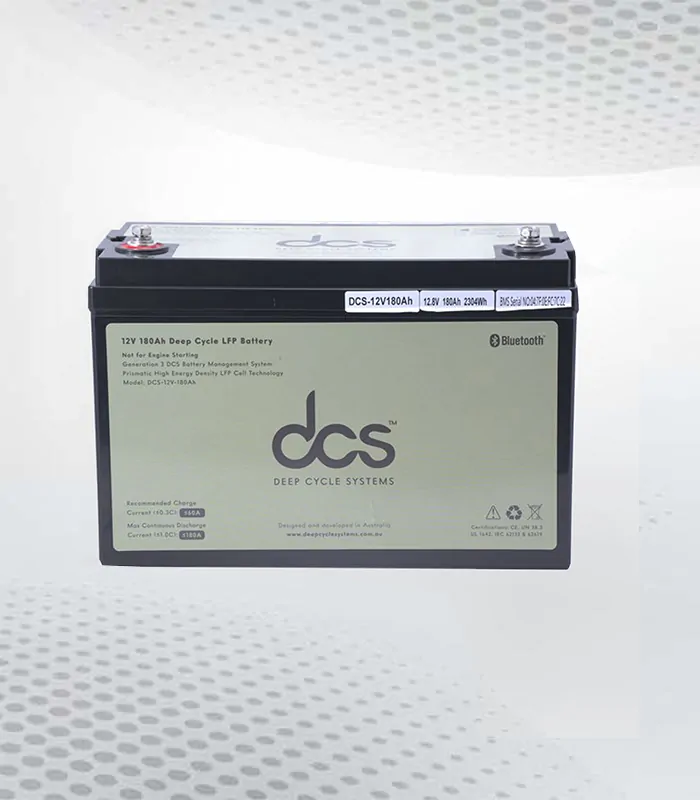As solar energy continues to gain momentum in the global quest for clean and renewable power, energy storage solutions have become increasingly vital. One of the most efficient and popular energy storage systems today is the lithium ion solar batteries. These batteries offer numerous advantages in terms of efficiency, lifespan, and performance, making them the top choice for residential, commercial, and even industrial solar energy applications.
Introduction to Lithium-Ion Solar Batteries
What are Lithium-Ion Solar Batteries?
Lithium-ion solar batteries are rechargeable energy storage systems designed to store the electricity generated by solar photovoltaic (PV) panels. These batteries have gained popularity due to their high efficiency, long lifespan, and ability to store large amounts of energy in a relatively compact space. Unlike traditional batteries such as lead-acid, lithium-ion batteries are lightweight and can be discharged to a greater extent without sacrificing lifespan.
Why Lithium-Ion Batteries Are Important for Solar Energy
Solar energy generation is intermittent, meaning that electricity is only produced when the sun is shining. To use solar power continuously, particularly during the night or on cloudy days, energy storage is crucial. Lithium-ion batteries provide a solution by storing excess electricity generated by solar panels, allowing homeowners, businesses, and utility-scale projects to use solar power around the clock.
These batteries are also important because they maximize energy independence, reduce electricity bills by storing solar power for later use, and provide backup power in case of grid outages. Their superior performance has made them the go-to choice for integrating storage into solar energy systems.
How Lithium-Ion Batteries Work
The Basic Structure of Lithium-Ion Batteries
A lithium-ion battery consists of several key components, including:
Anode: Typically made of graphite, the anode stores lithium ions during discharge.
Cathode: Made from lithium metal oxides, the cathode releases lithium ions during discharge.
Electrolyte: A liquid or gel that transports lithium ions between the anode and cathode.
Separator: A thin layer that prevents direct contact between the anode and cathode while allowing the flow of ions.
The movement of lithium ions between the anode and cathode during charge and discharge cycles is what creates electrical energy.
The Charging and Discharging Process
During the charging process, lithium ions move from the cathode to the anode and are stored there. This movement of ions is facilitated by the electrolyte. When the battery is discharged, the lithium ions move back to the cathode, releasing energy that is then used to power electrical devices or homes.
The efficiency and speed at which this process occurs are what make lithium-ion batteries particularly advantageous for solar energy storage.
Types of Lithium-Ion Batteries
There are several types of lithium-ion batteries, each with different chemical compositions and performance characteristics. Here’s a look at the most common types used in solar energy storage:
Lithium Iron Phosphate (LiFePO4)
Lithium Iron Phosphate (LiFePO4) batteries are known for their stability, safety, and long lifespan. They are less prone to overheating and offer a longer cycle life compared to other lithium-ion batteries, making them a popular choice for residential and off-grid solar systems.
Pros: High thermal stability, long lifespan (up to 15 years), and safe.
Cons: Slightly lower energy density compared to other lithium-ion variants.
Lithium Nickel Manganese Cobalt Oxide (NMC)
Lithium Nickel Manganese Cobalt Oxide (NMC) batteries are widely used in both electric vehicles and solar storage systems due to their high energy density and versatility. NMC batteries offer a balanced performance between safety, energy density, and cost.
Pros: High energy density, lightweight, and versatile.
Cons: Expensive compared to other battery types.
Lithium Cobalt Oxide (LCO)
Lithium Cobalt Oxide (LCO) batteries are typically found in smaller electronic devices but are increasingly used in solar storage applications due to their high energy density. However, they have a shorter lifespan and are more prone to thermal instability.
Pros: High energy density.
Cons: Shorter lifespan and less stable at high temperatures.
Lithium Titanate (LTO)
Lithium Titanate (LTO) batteries have extremely fast charging capabilities and a very long lifespan. They are also highly durable and can operate in extreme temperatures. However, they are less energy-dense and are usually more expensive.
Pros: Fast charging, long lifespan, and high stability.
Cons: Low energy density and high cost.
Advantages of Lithium-Ion Batteries for Solar Battery System
High Energy Density
Lithium-ion batteries boast one of the highest energy densities among rechargeable battery technologies, which means they can store a large amount of energy in a relatively small size. This makes them ideal for residential Solar Battery System where space may be limited, as well as for commercial applications where high power output is needed.
Long Cycle Life and Durability
Lithium-ion batteries can endure thousands of charge and discharge cycles while retaining a large portion of their original capacity. This long lifespan makes them highly cost-effective in the long run, despite their higher initial investment.
Fast Charging and High Efficiency
One of the standout features of lithium-ion batteries is their fast charging capability. These batteries can absorb solar energy quickly, making them efficient in capturing as much solar power as possible during peak sunlight hours. They also have a high round-trip efficiency, meaning that less energy is lost when stored and then retrieved.
Lightweight and Compact Design
Compared to traditional lead-acid batteries, lithium-ion batteries are much lighter and more compact. This makes them easier to install and handle, especially in homes where space might be a constraint.
Comparing Lithium-Ion with Other Solar Battery Technologies
Lithium-Ion vs. Lead-Acid Batteries
Lead-acid batteries have been a staple in solar energy storage for decades, primarily due to their low upfront cost. However, they fall short in key performance areas compared to lithium-ion batteries:
Lifespan: Lead-acid batteries have a shorter cycle life (typically 3-7 years) compared to lithium-ion (10-15 years).
Efficiency: Lithium-ion batteries have higher round-trip efficiency, around 90-95%, while lead-acid batteries typically offer 70-80%.
Maintenance: Lead-acid batteries require regular maintenance, while lithium-ion batteries are virtually maintenance-free.
Lithium-Ion vs. Flow Batteries
Flow batteries, particularly vanadium flow batteries, offer excellent long-duration storage and are scalable for large applications. However, they are bulky and less energy-dense than lithium-ion batteries, making them less suitable for residential use. Flow batteries also have a higher upfront cost but can last longer in some large-scale installations.
Applications of Lithium-Ion Solar Batteries
Residential Energy Storage
Lithium-ion batteries are perfect for residential solar energy systems due to their compact design, efficiency, and long lifespan. They allow homeowners to store excess solar power for use during the night or on cloudy days, reducing their dependence on the grid and lowering electricity bills.
Commercial and Industrial Applications
Commercial buildings and industrial facilities often use lithium-ion batteries to store solar energy and offset high electricity costs during peak demand periods. These batteries also help provide backup power for critical operations, ensuring reliability even during grid outages.
Off-Grid and Hybrid Solar Systems
Lithium-ion batteries are particularly beneficial for off-grid systems, where energy storage is essential for maintaining a continuous power supply. In hybrid systems, which combine solar power with grid electricity, these batteries help manage energy flow efficiently by storing excess solar energy and releasing it when needed.
Factors to Consider When Choosing Best Batteries For Solar Off Grid
Capacity and Power Rating
When selecting the Best Batteries for Solar off Grid, it’s important to consider both the capacity (measured in kilowatt-hours, or kWh) and the power rating (measured in kilowatts, or kW). Capacity determines how much energy the battery can store, while the power rating indicates how much energy it can supply at once. Both need to align with your energy consumption needs and solar system size.
Depth of Discharge (DoD)
DoD refers to the percentage of the battery’s capacity that can be used before it needs recharging. Lithium-ion batteries generally have a higher DoD compared to other battery technologies, often up to 90-95%, which means you can use most of the battery’s stored energy without reducing its lifespan.
Round-Trip Efficiency
Round-trip efficiency measures how much energy you can retrieve from the battery compared to what was initially stored. Lithium-ion batteries typically offer round-trip efficiency of around 90-95%, making them highly efficient in terms of energy use.
Battery Lifespan
The lifespan of a battery is measured in cycles, where one cycle refers to the full charge and discharge of the battery. Lithium-ion batteries typically last 5,000-7,000 cycles, or 10-15 years, depending on usage patterns. This longevity contributes to their cost-effectiveness over time.
Environmental and Safety Considerations
Are Lithium-Ion Batteries Eco-Friendly?
Lithium-ion batteries contribute to a cleaner energy ecosystem by enabling greater use of solar power. However, the extraction of lithium and other materials used in the batteries can have environmental impacts. Efforts are being made to improve recycling processes for lithium-ion batteries, and advances in battery technology are reducing the need for harmful materials.
Safety Measures and Battery Management Systems (BMS)
Lithium-ion batteries are generally safe, but they can pose risks if not properly managed. Overcharging or overheating can lead to thermal runaway, which is a dangerous condition where the battery generates excessive heat. To mitigate these risks, modern lithium-ion batteries are equipped with Battery Management Systems (BMS), which monitor and regulate voltage, temperature, and charging cycles to ensure safe operation.
The Future of Lithium-Ion Batteries in Solar Energy
Technological Advancements
Ongoing research in battery technology is leading to even more efficient, durable, and cost-effective lithium-ion batteries. Innovations such as solid-state batteries, which promise higher energy density and improved safety, could revolutionize energy storage in the near future.
Integration with Smart Grids
Lithium-ion batteries are increasingly being integrated with smart grids to enhance grid reliability and flexibility. These batteries can store excess solar energy during periods of low demand and release it during peak times, helping to stabilize energy supply and demand.
The Role of Lithium-Ion Batteries in Achieving Energy Independence
As more homeowners and businesses adopt solar energy, lithium-ion batteries will play a critical role in achieving energy independence. By storing solar power for use during non-sunny periods, these batteries allow users to reduce their reliance on the grid and minimize energy costs.
Conclusion
Lithium ion solar batteries are transforming the way we use and store solar energy. Their high efficiency, long lifespan, and versatility make them the ideal choice for a wide range of solar energy applications, from residential homes to large industrial facilities. As advancements in battery technology continue, lithium-ion batteries will only become more integral to the global transition to renewable energy, paving the way for a cleaner, more sustainable future. Investing in lithium-ion batteries for your solar energy system not only enhances your energy independence but also contributes to a greener, more resilient energy grid.
FAQs
What is a lithium-ion solar battery?
A lithium-ion solar battery is a rechargeable energy storage device that stores the electricity generated by solar photovoltaic (PV) panels. It allows users to store excess energy produced during the day for use at night or during periods of low sunlight.
How do lithium ion solar batteries work?
Lithium-ion solar batteries store electrical energy by allowing lithium ions to move between the battery’s anode and cathode during charging and discharging cycles. When solar panels generate electricity, the battery stores the excess energy, and when needed, the stored energy is discharged to power appliances or the grid.
How long do lithium-ion solar batteries last?
Lithium-ion solar batteries typically last between 10 and 15 years, or about 5,000 to 7,000 charge cycles. However, the lifespan can vary depending on factors such as usage patterns, temperature, and depth of discharge (DoD).
| Related Business Listings |
| Contact Directory |
| Local Business Profiles |




